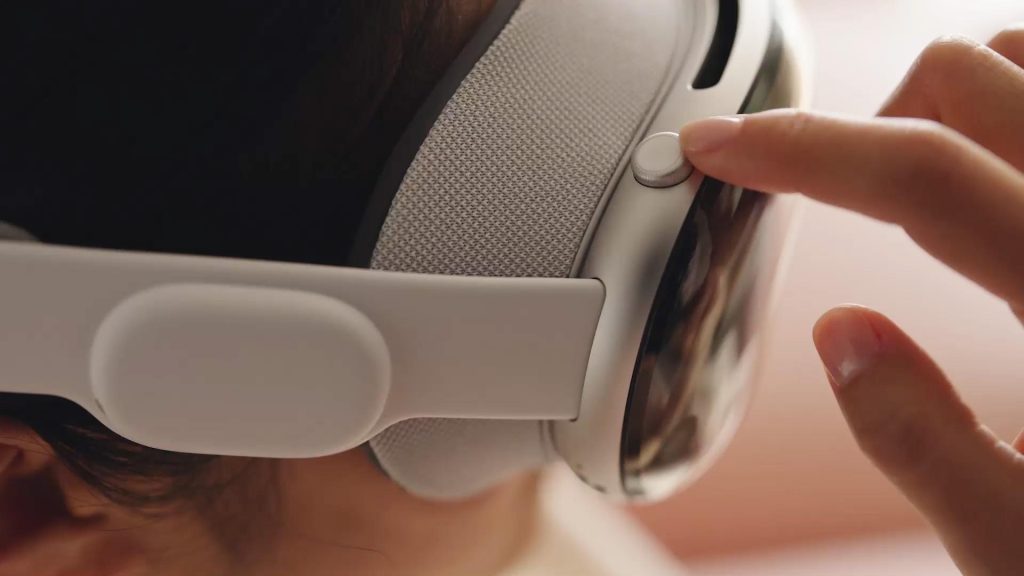“My VR does not acknowledge me as a person”: Is the metaverse leaving disabled users behind?

Last month, Apple revealed its long-teased Vision Pro headset, a device that uses augmented reality technology to project a digital image onto the physical world. But, Apple revealed, it won’t work — at least out of the box — if you wear glasses. Instead, you’ll need to buy inserts to attach to the device lens.
Apple’s announcement gives cause to question the tech industry’s visions of a so-called “metaverse” – what rival Meta CEO Mark Zuckerberg describes as an “embodied internet” supported by technologies like Augmented Reality (AR) and Virtual Reality (VR), or what is collectively called Extended Reality (XR). The reality of the metaverse is already much less frictionless than imagined by its proponents, particularly for users with some form of disability.
The celebrated affordance, and central goal, of XR technologies is the sensation of embodiment: the sense of having a body that exists within a digitally rendered space. It is upon the promise of this sensation that big tech companies like Meta, Apple, Microsoft, and HTC have invested billions in XR research and development.
Part of what makes this possible is the “Natural User Interfaces” that power our experiences in XR: voice interaction, gaze interaction, motion or gesture-based controls, and body-tracking. Just like other digital interfaces like smartphones or videogames, XR is designed with the body in mind. But despite this promise of an intuitive and effortless interface, not all users — particularly those with disabilities — can perform in the way required by the XR system. Without a more inclusive approach, a wide range of users may remain locked out of this next computing frontier.
A history of exclusionary design
The body is a central consideration in XR. For example, in a 2019 blog post by Meta — describing a then state-of-the-art sensor system for its Quest and Rift VR headsets — the company has gone to painstaking lengths to reduce undesirable visual errors, such as image stuttering or jittering. Errors like these can cause vomit-worthy nausea in even the most experienced VR user. But when we say that companies like Meta have been attentive to the body, what we mean is that they’ve been attentive to certain kinds of bodies — namely, that of the able-bodied male. Throughout the company’s history, this has rung true.
In 2014, social media researcher danah boyd wrote that the Rift’s testing on men resulted in the headset privileging the proprioceptive capacities of the male user. More recently, it was revealed that the design of the Quest had predominantly accounted for the interpupillary distance of male users (interpupillary distance is the distance between the centres of the users’ eyes). Lining up the centre of the eye with the lens in a VR headset is important for comfortable and non-blurry use, and differences in interpupillary distance have been identified as one of the key causes of motion sickness. Despite this, the adjustable interpupillary distance range in Quest devices that is “best” for most men (99 per cent of male users) is only optimal for 93 per cent of women.
These kinds of biases meant that the device itself wasn’t calibrated for women, resulting in increased feelings of nausea for these bodies rendered “abnormal” by Oculus’ development processes.
Disabling interfaces
The same narrow understanding of the body is clear around issues of accessibility and disability today.
In 2017, a report on survey research by a partnership of LucasFilm’s ILMxLab and the Disability Visibility Project gave an account of people with disabilities’ experience in using VR, pointing out various ways that VR interfaces by virtue of their design are “disabling”. Elsewhere, Ablegamers, a disability advocacy group for increased accessibility of videogames, presents a comprehensive breakdown of accessibility issues in VR. These include heavy emphasis on motion controls, requirement of very specific body positioning, or a privileging of the visual and gestural (with less attention to accessible audio).
As we see in promotional material for VR, the framing of the user is commonly in terms of what disability theorists and activists after Rosemarie Garland-Thomson calls a “normate body”. By this she means the socially constructed, ideal image of the body — one that is white, able-bodied, heterosexual, and male — something that accrues power and authority if approximated. As we see, through AbleGamers or through the ILMxLAB/Disability Visibility Project report, these normate bodies are encoded into the design of VR interfaces.
A more recent example is the lack of control over avatar height in the Oculus platform. The Oculus Quest headset uses external facing cameras to scan the environment around the user to situate the user as accurately as possible in the virtual environment. This means if you crouch in real life, your avatar crouches in the game.
But for wheelchair users and people with limited mobility, such an approach makes many Quest games unplayable. Interfaces are often designed to be only within reach of the standing user, and the sitting user’s view is rendered at crotch-height of the virtual non-player characters. Seated mode, where it does exist, is designed for the comfort of the normate body, rather than the inclusion of those for whom sitting is a necessity.
This limitation has an easy solution, currently available on the Steam VR platform. Instead of the device determining the (virtual) floor height, Steam VR allows the user to make themselves “taller” with a slider and assign a button to allow them to switch between standing and sitting during gameplay.
While XR is a technology that engages the physical body — systems that are, after all, driven by movements of the eyes and hands — there also barriers for those neurodiverse users or those with cognitive impairments. For instance, in our current research project, one disability services provider told us that despite VR proponents often claiming the liberatory potentials of the technology for those with cognitive impairments, there were limited options to reduce the speed at which prompts are displayed in software.
“…one disability services provider told us that despite VR proponents often claiming the liberatory potentials of the technology for those with cognitive impairments, there were limited options to reduce the speed at which prompts are displayed in software”
By configuring these types of options at the platform level, VR can be inclusive of a wider variety of users. Virtual environments are entirely virtual, they can be rendered in ways that are inclusive. Instead, the assumptions made about users at a design level work to exclude people from the promises of the technology.
What can be done?
As one disabled VR user puts it, “[my VR system] does not acknowledge me as a person”. The frustration of many disabled users is further amplified by the fact that proponents of XR often market the technology as one that might empower people with disabilities — allowing them to do things in the virtual world that they couldn’t in the physical. But what further can be done? Given the breadth of the term disability (and the resource constraints on many smaller software developers), simply saying that developers need to design with accessibility in mind is a naïve and unrealistic demand.
VR market leader Meta provides a series of optional “best practices” for designing for accessibility (rather than providing solutions that are baked into the hardware or through tools for developers). These push accessibility requirements onto app developers — but due to a lack of standardised technical resources, each development team needs to “reinvent the wheel” when it comes to accessibility.
Apple take a more productive approach: offering development tools that developers can use to design for disability. These tools allow developers to include a wider range of options for software customisation (for instance, changing the main input feature from hand gesture based to gaze).
A further — and important step — will be to ensure that developers are incorporating the perspectives and insights of people with disabilities more centrally into the design process as to ensure more of an eye to disability (a point emphasised in participant responses in the ILMxLAB disability report).
Virtual reality is only a reality for some. Despite being ostensibly intuitive or natural, we must ask ourselves: intuitive and natural for whom? Given that VR is promised to become a more central part of everyday life — whether communication or work — the stakes of exclusion for people with disabilities are significant.
Recommended citation
Egliston, B, Clark, K.E., and Carter, M. (August, 2023) “My VR does not acknowledge me as a person”: Is the metaverse leaving disabled users behind? Critical Augmented and Virtual Reality Researchers Network (CAVRN).
This article was first published on ABC News. Read the original article.
This work is licensed under a Creative Commons Attribution-NonCommercial-NoDerivatives 4.0 International License.
